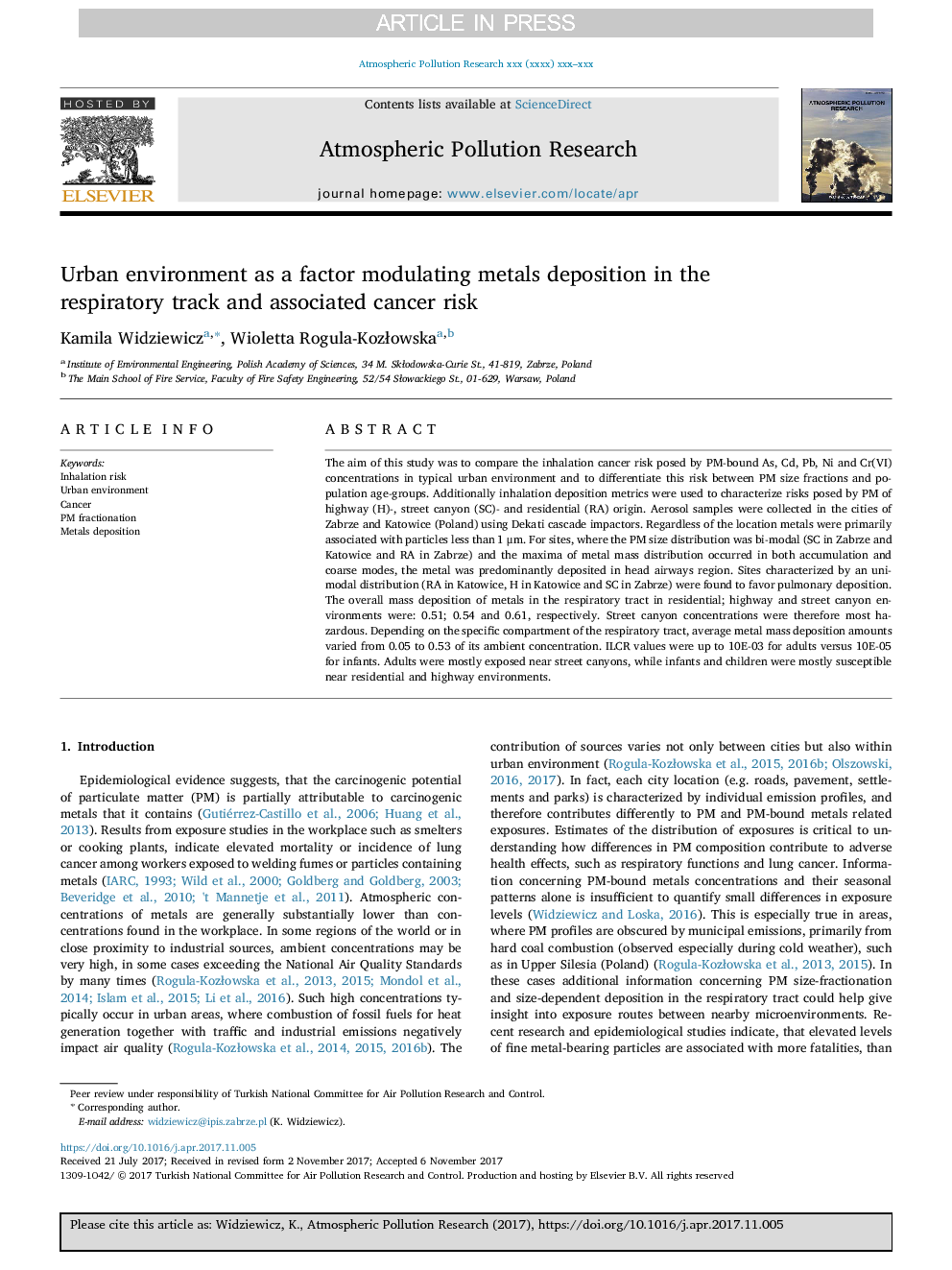ترجمه فارسی عنوان مقاله
محیط شهری به عنوان یک عامل مدول رسوب فلزات در مسیر تنفسی و خطر سرطان مرتبط است
عنوان انگلیسی
Urban environment as a factor modulating metals deposition in the respiratory track and associated cancer risk
| کد مقاله | سال انتشار | تعداد صفحات مقاله انگلیسی |
|---|---|---|
| 139988 | 2018 | 12 صفحه PDF |
منبع

Publisher : Elsevier - Science Direct (الزویر - ساینس دایرکت)
Journal : Atmospheric Pollution Research, Volume 9, Issue 3, May 2018, Pages 399-410

